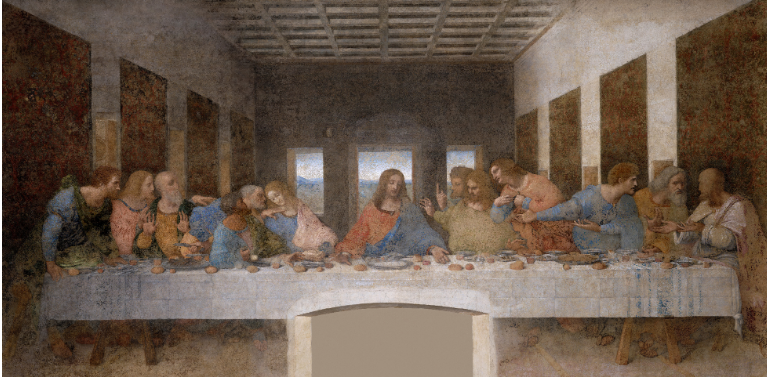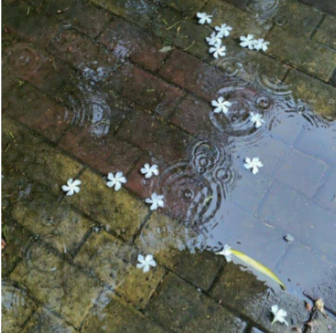The Art of Handwritten Letters
- Kiara Aggarwal
- Apr 1
- 4 min read
Updated: Apr 2
By Irintsoa Rakotomamonjy
I found a pile of them tucked away in a dusty clear plastic—letters my mother received in her
youth. Some sent her poems; some sent her written song lyrics. The paper had yellowed in
time, the ink slightly faded, but the colours of emotions enclosed within each fold remained
vivid. As I read them, I was transported to a time where love, friendship, and longing were
carefully scribbled onto pages with intention. It was a beautiful kind of intimacy, I thought, to
dedicate one’s time for another soul in distance and hand them a piece of you.

Growing up in the digital age, where we tend to feel guilty for not being chronically online,
the art of letter writing feels like an anachronism. There’s this pressure to be constantly
reachable, constantly responding, constantly engaged. 24/7. Yet, in this hyperconnected
world, we have somehow become more disconnected. Although Gen Z conservationists
might argue against the use of paper, I believe we need more handwritten letters—more
tangible remnants of human connection.
Letters have long served as a pathway of vulnerability, expressing what we lacked the
courage to say face-to-face. Take Franz Kafka’s letters to his father, for instance, a desperate
attempt to mend a broken relationship, consisting every bit of his honesty. Unfortunately, it was too late to reach his father, but little did he know it would reach millions of readers years
later. It might have saved some relationships too.
Albert Camus and Maria Casarès exchanged 865 letters after they met at Theatre de
Mathurins in Paris, where Camus’s play was being staged. Through the letters, he was
recounting both his life as the ‘absurd’ revolutionist and as a star-crossed lover. In his last
letter to her, it read, “I am so happy at the idea of seeing you again that I’m laughing as I
write,” only for him to die from a car crash a week later. At least his last words to her were
written down, an immortalized fact that he died loving her.
Even the epistles of Paul, written in prison, spreading words about finding courage in
persecution and amplifying the message of Love, despite being persecuted himself. Did he
know that his letters went far beyond Ephesus, Philippi and Colosse and would still touch
souls a couple millenniums later? Letters outlive us!
While the words of these great writers remain as an epitome of their lives, we too have
personal relics that carry our own stories. When my grandmother moved in with us, she
handed me a small rectangular carton. Inside was a brown wooden quill pen and a half-full
inkwell. It became one of my most cherished possessions.
I have always written letters, many never sent. But for those I chose to send, I used that quill
pen, believing it added something quite sacred to the experience. It was the thrill of dipping
an old pen in ink. It was seeing the thick curves it created in my handwriting as I was careful
not to press too hard, avoiding traces in the paper’s back. It was the strong scent of ink,
magnifying my message and willingness to write to my loved ones. Perhaps, it was in
bringing an obsolete object back to life.
More than this personal touch, the very act of handwriting a letter creates something deeper
than a mere exchange of words. Instead of mindlessly typing abbreviations just to hit ‘send’
as quickly as possible, there is something profoundly intimate about taking the time to write a
letter. You think of a specific person, select a piece of paper (sometimes choosing a particular
texture, colour, or postcard picture just for them), and carefully craft your thoughts into a
visible part of your identity. Your handwriting is like your voice; nobody can replicate it.
You continue to write only to realize that your subconscious unravels in ways it never does in
a short text or a phone call. You might find yourself sharing small details of your day,
confiding fears or dreams, trusting that even if your words never reach the initial recipient,
they will still have existed somewhere in the world. And for a while, it is okay to unfold your
soul freely.
There is also the deliberation of words—the choice to write “I love you and I’ll get to see you
soon” rather than reducing it to “ily brb.” You decide how to sign off, defining the depth of
relationship with your recipient: “With love,” “Most ardently,” “With gratitude,” or simply
“Yours truly.” And scribing your signature is a cherry on top.
Finally, the waiting. The part where patience is tested and uncertainty lingers. In this
generation of instant gratification, waiting is secretly dreaded by many. Yet, it’s a testament
of trust and of love itself. I send letters to people, knowing I might never get a reply. Some
respond out of obligation, others not at all. Yet, the thought that my words might have landed
in someone’s hand and made them smile is enough for me to write more to more until my ink
runs dry.
Eventually, in this fleeting world of ours, we shall leave a remnant of our existence. We
ought to give somebody company through the craft of our own hands, for it is something to
hold, to reread, to remember.



Comments